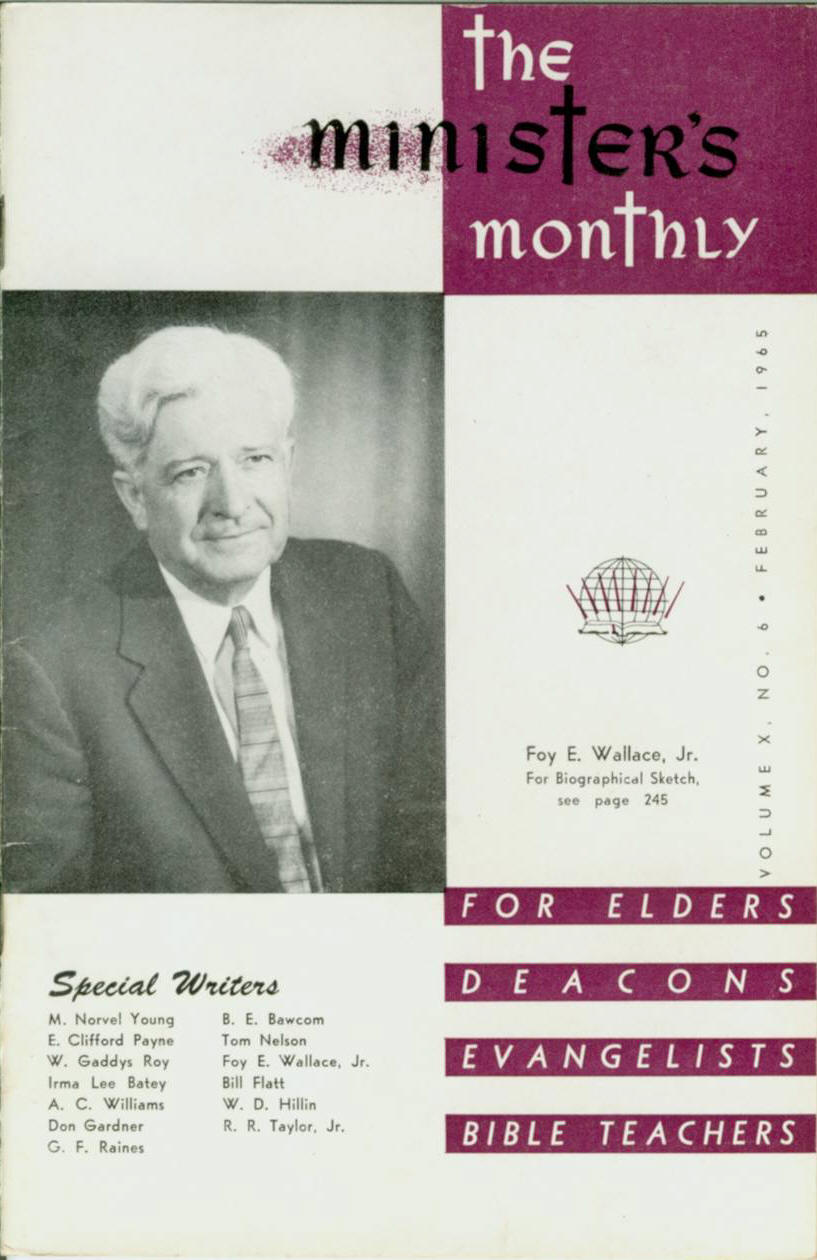Foy Esco Wallace
1896-1979
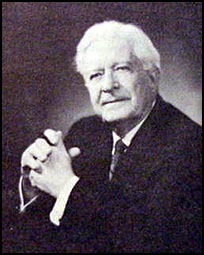
![]()
Sketch On The Life Of Foy E. Wallace, Jr.
Foy E. Wallace, Jr., was born September 30, 1896, in a farm house surrounded by cotton fields, a few miles south of Belcherville, in Montague County, Texas. He often said that he was born in the middle of a cotton field. His father, Foy E. Wallace, Sr., was one of the most prominent preachers in Texas, and led the fight with many others against the missionary societies and instrumental music in the worship of the churches. His mother was Martha Anne (Mattie) Higgins, a very devout student of the Bible and the daughter of Marcus D. Lafayette Higgins, who was an elder and part-time preacher in the church, and Martha Jane Harvey, whose family numbered many members of the church.
The subject of this sketch was not a "junior" in the full meaning of the term, since his middle name was Esco, while his father's was Edwin. The name, Edwin, was given to a previous child who had died, but all of his preaching life he was known as Foy E. Wallace, Jr.
His grandfather, Thomas Knox Wallace, who came from Morgan County, Alabama, with his family to Cherokee County, Texas, in 1849 when he was just a boy, was one of the pioneer preachers in Texas, who preached and farmed, as was the custom of so many of the early preachers. Foy E. Wallace, Jr.'s great uncles were Ed S. and A. Leroy Elkins, preachers who did much for the cause of Christ in Texas and Oklahoma. His genealogy also includes many preachers of the Wallace, Higgins, Elkins, Morrow, and Peden families, reaching back to the 1500's in Scotland, where one of his ancestors, Andrew Hugh Peden, gave his life as a martyr for his religion.
A very traumatic event in his life was the death of his beloved mother in 1913, when he was 16 years of age. He often spoke of her and of the words which C. R. Nichol spoke to him at the cemetery. "Foy, this is not your mother. She is not here. She has gone to be with her God." His great love and devotion for his mother was reflected in the high pedestal upon which he placed womanhood.
While a student at Thorp Springs, Texas, he preached his first sermon at Stephenville, Texas, at the age of 15. He soon had all the appointments and meetings he could hold, partly because of his father's reputation, but mainly because of his precocity and innate ability. Everyone seemed to want to hear "Little Foy." Long after he was married, he was still advertised as the "boy preacher."
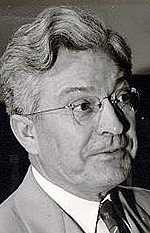 On
one of his preaching appointments, in Belton, Texas, he met a
vivacious and beautiful girl, Virgie Brightwell, to whom he gave his
heart and from whom he never swerved in absolute devotion for 65
years. She was the daughter of William Henry Brightwell and Nancy
Jane Edds, the youngest child, born 10 years after the family had
lost their three youngest children in one month during a terrible
epidemic. She had come from her home in Temple with her father to
hear the "boy preacher." They were married November 29, 1914, she at
age 16, he at age 18.
On
one of his preaching appointments, in Belton, Texas, he met a
vivacious and beautiful girl, Virgie Brightwell, to whom he gave his
heart and from whom he never swerved in absolute devotion for 65
years. She was the daughter of William Henry Brightwell and Nancy
Jane Edds, the youngest child, born 10 years after the family had
lost their three youngest children in one month during a terrible
epidemic. She had come from her home in Temple with her father to
hear the "boy preacher." They were married November 29, 1914, she at
age 16, he at age 18.
Their first local work together was at Lott, Texas. They also lived in Temple, Vernon, Wichita Falls, and Fort Worth, where he preached for the churches, but more and more, he was called upon to preach in gospel meetings until eventually he spent most of his time in such meetings. At first, Virgie would go with him to the meetings, but as the family grew, she would stay at home with the children. Throughout the long absences from her husband, she was always cheerful and never complained. She supported him fully in the great work to which he was committed. He was often away for weeks at a time. On one occasion, he preached in a six-weeks meeting in Pensacola, Florida. Family crises always seemed to occur when he was away. On one occasion, while he was away in a meeting, the family home in Fort Worth burned to the ground. He returned home in the wee hours of the morning to find the family, who had barely escaped with their lives, in their night clothes in the yard awaiting his arrival.
One of his rare, but fruitful, periods of local work was with the Central Church of Christ in Los Angeles, California, in the early 1930's. The churches in California at that time were few and far between. The Central Church, when he first arrived, met in a rented hall. He traveled back to Texas and raised funds to build a beautiful and commodious building for the church, one of the first of its kind in the West.
From California, he was called to come to Nashville, Tennessee, to assume the editorship of the Gospel Advocate. It was in the days of the Great Depression, and when he arrived in Nashville, he was to be greeted with the news that his salary had been cut even before he had assumed the work. He was called on to preach in numerous meetings. The churches knew that he had a salary at the Advocate, so they did not support his meetings adequately. With five children to support, the going was very difficult. Yet, during that time and until the day of his death, he never would tell the churches an amount for his support, but always left it to their discretion. In answer to what amount he would expect for his services, he invariably replied, "Just do what you can, and I will be satisfied."
Heavily burdened with debts, which he eventually repaid in full, he resigned his work with the Gospel Advocate and headed with his family toward Texas. In Oklahoma City, Oklahoma, a group of dedicated friends met him and told him that he was to go no further. Oklahoma City was to be his home for many years. During all this time, he was in constant demand for gospel meetings throughout the United States and Canada.
During these years, the question of premillennialism was plaguing the brotherhood. At first, almost single-handedly, and then with many devoted co-workers, Foy E. Wallace, Jr., waged a successful fight to keep premillennialism out of churches of Christ. First, from the pages of the Gospel Advocate, then from his own papers, the Bible Banner, the original Gospel Guardian, and Torch, he covered the brotherhood with his own effective writing and with that of the most talented men in the church in his determined fight that error "shall not pass." In this work, he depended greatly upon the pen of his brother, Cled E. Wallace. Through his writings and preaching, he also effectively championed the Christian's right to bear arms for his country. He opposed the support of colleges and schools from the treasury of the church. In his later years, he waged a relentless war against the perversions of the scriptures in the new translations and versions of the Bible.
In his meetings he literally baptized hundreds. In one meeting at Lomita, Texas, there were over 100 baptisms, the youngest being 16 years of age. There were 25 who came from the Baptist Church, including several of their deacons, and 40 from the Methodist Church. His debates were classics, and also resulted in many conversions.
He never debated simply for the sake of debating. He insisted on their being a capable representative of the opposing doctrine. Among his notable debates were the two debates in 1933 with Charles M. Neal concerning premillennialism, the debates with Dr. J. Frank Norris in 1934 in Fort Worth, with Dr. E. F. Webber in Oklahoma City in 1937, and with Glen V. Tingley in Birmingham, Alabama, in 1938, all on the subjects of premillennialism and Baptist doctrines, and several debates with capable representatives on the subject of instrumental music in worship. In 1944, he traveled to California to debate Dr. John Matthews in Los Angeles on the subject of Anglo-Israelism.
In 1952, while he was in a meeting in Cushing, Oklahoma, he returned to his hotel room to find the door locked and no answer from his wife to his knocking. He found that she had collapsed in the bathroom, having suffered a major stroke. He rushed her to Scott and White Hospital in Temple, Texas, where the doctors first said that she could not live and then that she would never walk again. He cancelled all his preaching appointments and devoted himself to his beloved's recovery. He first took her to Corpus Christi, Texas, but then heard of the therapeutic work for stroke victims at Hot Springs, Arkansas. At Hot Springs, she gradually began to regain partial use of her body and learned to walk again with aids. After he resumed his meeting work, he took her with him to most of his appointments. His love and solicitude for her was a marvel for all who witnessed them.
For over 25 years, they traveled together to meetings from one end of the nation to the other. The hearts and hearths of many devoted friends were opened to them. Without the love and help of his friends, he could never have endured those last years. In the last of their traveling, she was confined to a wheelchair. The picture of the old white-haired patriarch pushing his invalid wife in a wheelchair, warmed the hearts of many people.
Many of the large churches were closed to him in those years, partly because of the length of his sermons, which often far exceeded an hour in length. Where he did go, the listeners invariably commented that the time had passed so rapidly that they were unaware that he had spoken so long until the sermon was over. It pleased him that the young took to his preaching so enthusiastically; they, for the most part, had never heard anything like it before.
He was entirely contented and happy to go where he was wanted and needed, and he helped countless small and rural churches. When he died, there were appointments waiting to be filled in California, Texas, Tennessee, and Florida.
He was the author of more than a dozen books which have greatly influenced young preachers and members of the church. His book "God's Prophetic Word," is considered a classic in its field and is used as a textbook in colleges and schools of preaching. Among his other books are "The Book of Revelation," "Bulwarks of the Faith," "The Gospel for Today," "The Christian and Government," "The Sermon on the Mount and the Civil State," "The Story of the NorrisWallace Debate," "The Neal-Wallace Debate," "Number One Gospel Sermons," "A Review of the New Versions," "The Present Truth," and "The Instrumental Music Question."
He was devoted to his
children and to his grandchildren. Two of his sons, Wilson and
William (Bill) are preachers. His daughter, Martha Jane, is married
to a gospel preacher, Richard E. Black. His eldest son, Taylor, and
his daughter, Lee Ella, are also members of the church.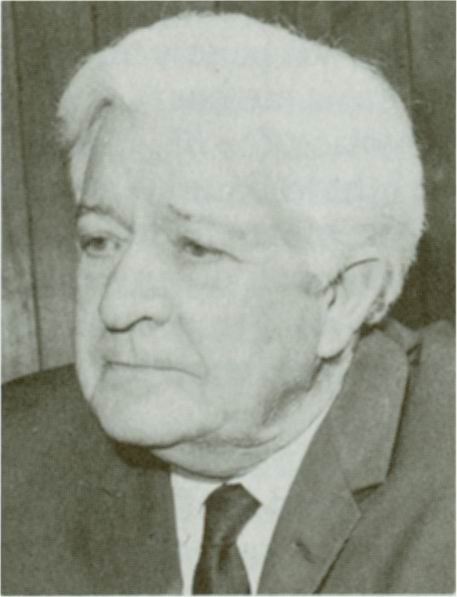
In 1979, he moved to Hereford, Texas, to be near his son, Wilson, and his family. He had developed a blood condition similar to hemophilia. In the blood transfusions he needed, he contracted hepatitis. He was in the local hospital in Hereford for two weeks, during which time he seemed to be making a recovery. His doctor thought that he would recover. In the early afternoon of December 18, he worsened and quickly passed from this life, evidently from a stroke caused by his blood condition. He had requested to be buried where he died, and thus he was interred in the West Park Cemetery in Hereford, Texas. His grave-stone reads, "Soldier of the Cross." His widow thought that it was appropriate for him to be buried in West Texas where he had preached so often and among the friendly people he had loved. He had preached at the Central Church of Christ in Hereford on Sunday for both services just two weeks before he died. His sermon was one of his favorites: "The Beatitudes-Pentecost Pointers."
If ever a man fought a good fight, kept the faith, and finished the course, Foy E. Wallace, Jr., did. He rests from his labors and his works do follow him. Survivors included his wife, Virgie; his three sons, Wilson Wallace, William Wallace, and Taylor Wallace; two daughters, Mrs. Richard E. Black and Lee Ella.
Funeral service was held in the Central Church of Christ in Hereford, Texas, with Leroy Brownlow, George DeHoff, and J. T. Marlin officiating. Gary Colley led the prayer. Burial was in Hereford, Texas, with interment in West Park Cemetery.
—In Memoriam, Gussie Lambert, c.1988, Pages 277-281
![]()
![]()

Front Cover Of Gospel Advocate - Foy E. Wallace, Jr. Memorial Edition
![]()
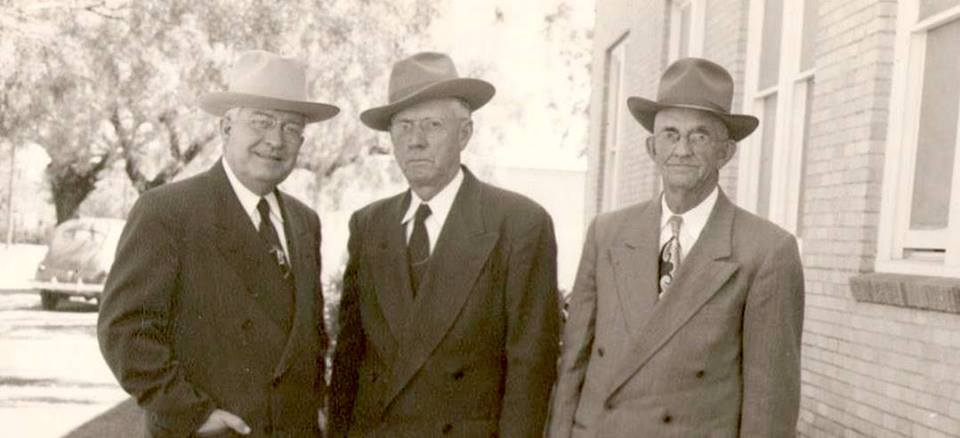
Left to right: Foy E. Wallace, Jr., Austin Taylor, J. Early Arceneaux
This photograph was taken in Uvalde, Texas late in 1951 by Swofford's Photo Service.
A cropped version the photo was published by the Firm Foundation of 11 December 1951 on page nine.
The caption read, "Three Great Gospel Workers."
Photo courtesy of Terry J. Gardner, 10.01.2014
![]()

Signature of Foy E. Wallace, Jr.
Courtesy of Terry J. Gardner, 04.2010
![]()
Directions To The Grave Of Foy E. Wallace, Jr.
F.E. Wallace, Jr. is buried in West Park Cemetery in the city of Hereford, Texas. Hereford is located in the Texas panhandle, just 47 miles southwest of Amarillo. Take I-27 south of Amarillo toward Canyon. Take Exit 110, Hwy. 87/60. Within a few miles Hwy. 60 will bear toward the southwest. Head southwest on Hwy. 60. When entering Hereford take E. Park Ave. (Hwy. 211) and go 2.1 miles. The cemetery will be on the left. Enter the main entrance and go to the second paved road to the left (at the flagpole). Begin looking to the left. The Wallace monument is close to the street.
GPS Coordinates
34°49'15.8"N 102°25'17.5"W
or D.d. 34.821067,-102.421533
![]()
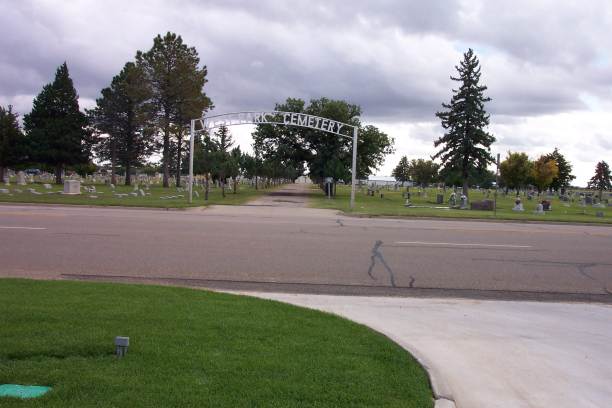
West Park Cemetery, Hereford, Texas
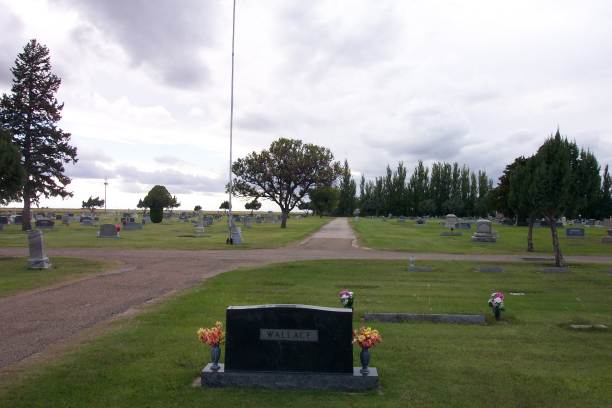
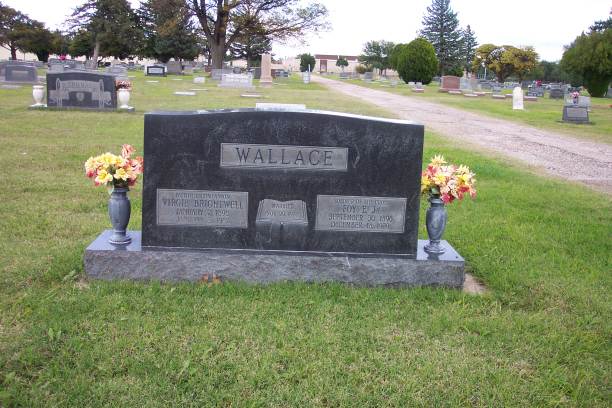
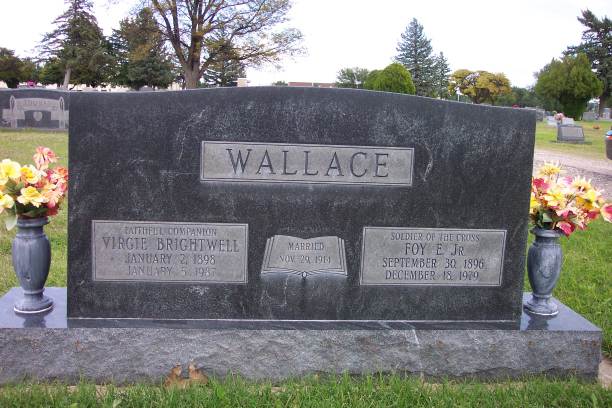
Married Nov. 29, 1914
Faithful Companion
Virgie Brightwell
January 2, 1898
January 5, 1987
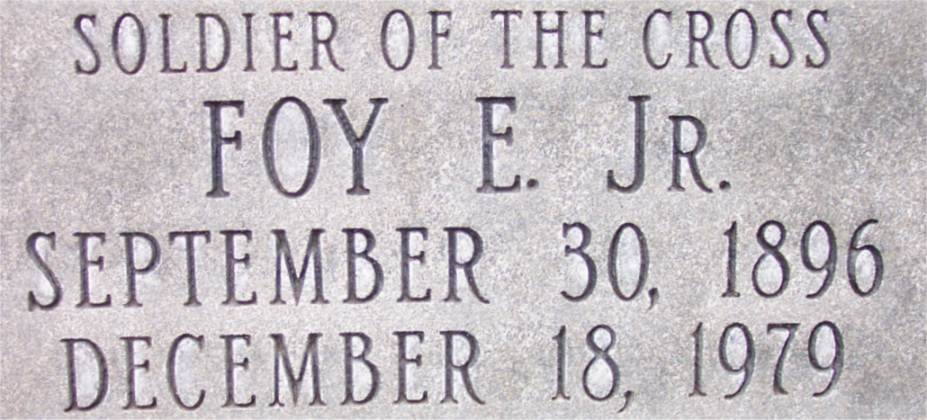
Soldier Of The Cross
Foy E. Jr.
September 30, 1896
December 18, 1979
![]()
